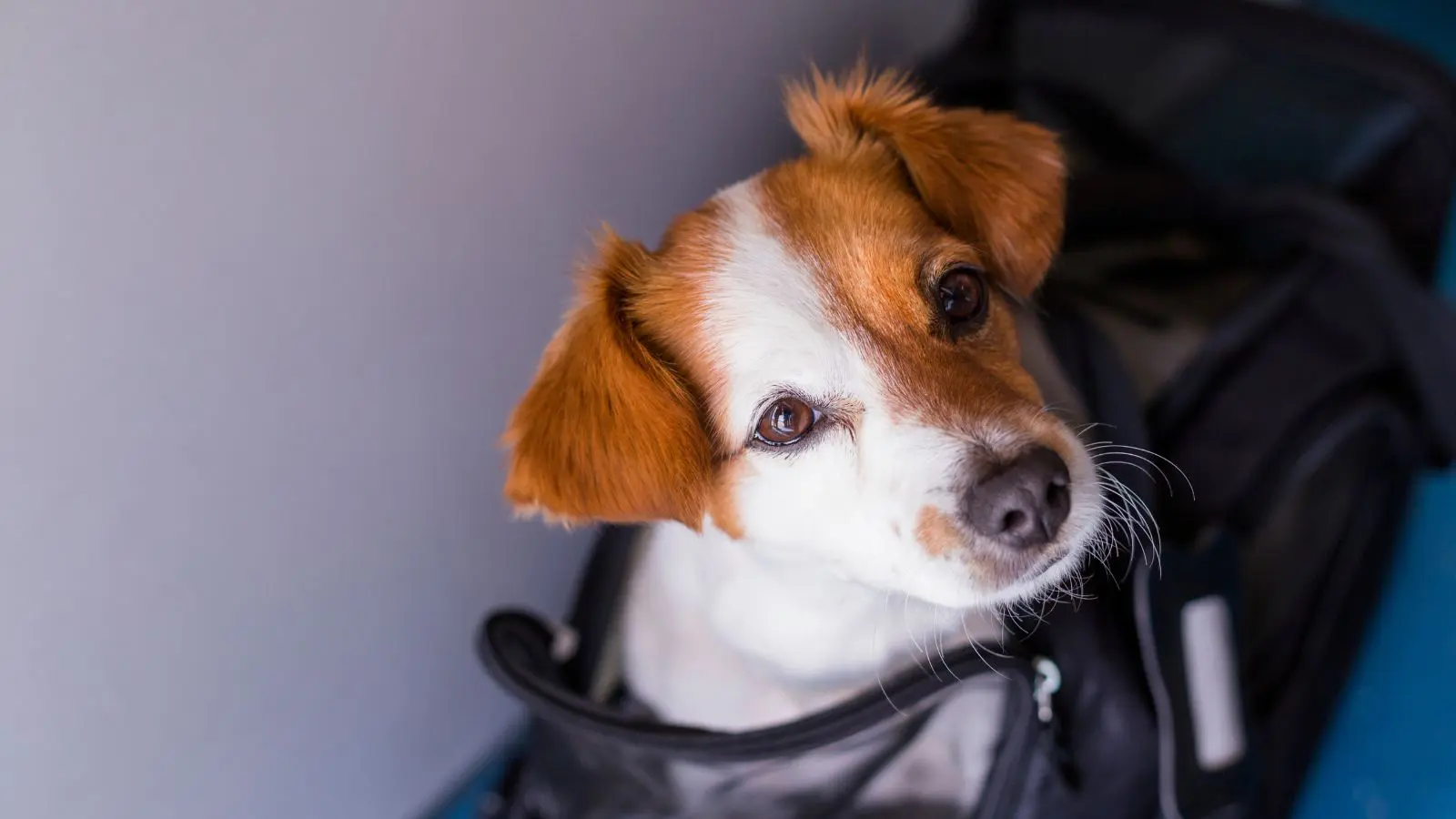Air travel is stressful enough when you’re flying with kids, but traveling with pets can take that stress to a whole new level. When flying with a dog, your first priority as a pet owner is to ensure your pet is safe and comfortable, whether they’re flying in the cabin with you or traveling in the cargo area.
Because taking care of your four-legged family member while traveling requires you to think beyond simply finding a cheap flight, there are a number of factors to consider before and during your trip. From choosing a dog-friendly airline with a reasonable pet fee to preparing your pooch for the journey ahead of time, here are the most important tips for flying with a dog.
WHERE TO STAY: 10 Best Pet-Friendly Resorts and Hotels in the U.S.
Important Tips for Flying with a Dog
1) Choose an airline that accommodates your type and size of dog.

The websites for domestic carriers like Southwest, JetBlue, American, Alaska, United, and Delta each spell out the kinds of dogs that are and are not allowed to fly in the main cabin, including restrictions on age, size, and breed; requirements for a carrier that can fit under the seat; and whether larger dogs are permitted onboard as cargo travel. The pet fee for flying with a dog can range from about $95 to $200, depending on the airline.
FLYING WITH KIDS: How to Sit Together on the Plane When Flying as a Family
“Each airline has information about their specific pet policies, and they do vary,” says Dr. Shannon Gregoire, an associate veterinarian at Woodstock Veterinary Clinic in Connecticut and the editor of Pet Candy Magazine. “It is always best to check the airline’s rules on their website before purchasing tickets.”
Some airlines allow you to indicate that you’re flying with a dog when booking your ticket online; other airlines require a phone call to claim your spot. You’ll want to do this quickly to ensure there aren’t any issues with bringing your pet.
2) Choose a pet carrier that meets the requirements of your chosen airline and then start getting your dog used to it before your trip.
“Carrier training is the most important step in flying with your dog,” says Gigi Chow, who runs the dog travel website Wet Nose Escapades and has flown with her rescue Yorkshire terrier on more than 50 flights. “This step takes patience, time, and lots of treats.”
FLIGHT TIPS: When Do You Need a Child Travel Consent Form?
Chow suggests starting at least two months in advance of your dog’s first flight. Begin with a few minutes a day and work your way up. “Depending on the duration of the flight, you’ll want to train your dog to feel comfortable inside for at least one to three hours before the actual flight. The more relaxed your dog can feel inside the carrier, the better he or she will fare on the flight.”
3) Gather all the health-related information you might need for your dog during your travels.
Talk with your vet about any particular concerns based on your travel itinerary, and start the process early to ensure it’s completed in time. “Prepare a health certificate and proof of vaccination; this will ensure smooth-sailing at the airport,” says Jen Jones, a professional dog trainer and behavior specialist and the founder of the blog Your Dog Advisor.
NO HIDDEN FEES: Kids Stay Free at These 10 Family-Friendly All-Inclusive Resorts
4) Give your dog a chance to stretch their legs before heading to the airport, and be prepared for potty breaks by mapping out the pet relief areas at the airports you’ll be utilizing.

“I like to walk them before the airport so they’re a little tired,” says Emmeline Peterson, who documents her adventures with her service dog Finnian on her Instagram account, @finnianthegoldie, and also travels with her other dogs, Lacey and Keegan. “Do a lot of dog enrichment activities before to get their mental energy out too.”
For bathroom breaks, you can check the terminal maps for individual airports or find information on sites like PetFriendlyTravel.com.
5) Arrive early and allow for extra time should any hiccups arise.
“My main tip for flying with your dog is to make it as easy on yourself as possible,” says Erika Barnes, founder and CEO of the website PetSmitten. “For me, it means arriving at the airport in plenty of time… If something should go wrong with my documents or the dog’s documents, I can be safe in the knowledge that there is plenty of time to fix it.”
AIRPORT TIPS: How Early Should You Get to the Airport?
6) Be ready for the security screening process.
“Your dog will go through security (just like everyone else),” says Sadie Cornelius, who handles creative and content marketing for Canine Journal and flies often with her Cavalier King Charles spaniel. “Prepare to remove their harness, collar, and leash, and guide (or carry) them through the metal detector.”
7) Prepare for changing air pressure.
Some dogs can be sensitive to pressure changes while in flight. “I’ve given bully sticks or low odor chews; the chewing can help with ear sensitivities,” says Peterson. “You can also buy dog earmuffs for takeoffs and landings.”
KNOW BEFORE YOU GO: Unaccompanied Minors on Flights: Everything You Need to Know
8) Expect little accidents.
Be ready for accidents, too. “Besides putting a pee pad inside the carrier, you should have dog wipes and human antibacterial wipes handy for easy cleaning,” advises Chow.
9) Reassure your dog that everything is okay.
Show your dog there’s no need to be scared. Your dog can sense if you are nervous, so staying calm is important to keep them comfortable. Takeoff and landing are the loudest and scariest moments, so check on them after each.
FUN AT SEA: What Are Themed Sailings? Here’s What 6 Major Cruise Lines Offer
10) Make an informed decision about cargo travel for large dogs.

The decision to have a large dog fly in the cargo compartment (when that option is available) is a personal one. “While most animals flown in the cargo area of airplanes are fine, you should be aware that some animals are killed, injured, or lost on commercial flights each year. Excessively hot or cold temperatures, poor ventilation, and rough handling are often to blame,” says The Humane Society of the United States on its website. Talk with your veterinarian for advice specific to your pooch.
More from FamilyVacationist:
- Pet Travel Tips: 4 Most Important Safety Tips for Traveling with Pets
- 15 Dog-Friendly Hotels in New England That Will Pamper Your Pup
- 7 Things You Should Never Do When Camping with Pets
Corrections and clarifications: A previous version of this story featured quotes misattributed to Dr. Amanda Takiguchi. Those portions have been removed.













